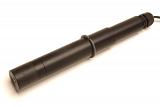Sensorex has recently introduced a new member to the series of CLD chlorine-dioxide sensor. It offers real time solutions for disinfection of water and chlorine-dioxide generators using chlorine-dioxide. It is a flexible and cost -effective way to measurethe presence of amperometric chlorine dioxide with a 4-20mA output.
The device is available in sizes measuring 0-2ppm and 0-10ppm. Its design ensures its long life and low maintenance overheads, with its membrane cap having to be replaced less often, that also leads to less time being spent on repairing and re-installation. It can be installed easily using the company’s FC72 flow cell that deploys 0.25in FNPT threads. Alternatively, it can be just directly dropped to replace the existing and earlier versions of sensors.

It operates over a range of 4-11pH and temperatures ranging from 0-45°C at an optimum pressure of 14.7psig. Chlorine dioxide being a potent biocide is generally used to eliminate harmful pathogens like the SARS virus and Legionella bacterium. Its chemical properties differed from those of chlorine, and it is almost 10 times more soluble in water than chlorine at 3.01g/litre at a temperature of 25°C. It also does not hydrolyze in any solution. Since it is easily soluble in water, it can withhold its oxidative and biocidal properties across a broad pH range. Besides being used to disinfect drinking water by government agencies, the gas can also be used in food processing and in water processing in various industrial sectors.
Once the gas is diffused across the sensor's hydrophobic silicone membrane, it separates the cathode and electrolyte solution, at the same time getting electrochemically reduced at the gold cathode, and oxidized at the silver anode. The electrons released at the cathode and accepted at the anode, thus cause a current flow proportionate to the presence of the gas outside the sensor under constant conditions. The on-board electronic circuitry maintains the low-current output to a 4-20mA signal compatible with both programmable logic controllers (PLCs) and distributed control systems (DCS) that support small, standalone, single-point installations and large industrial systems with equal ease.
The sensor can be installed using the company’s FM001 flow-meter that steadies the flow of liquid for greater system stability. This technique results in greater accuracy in measurement. The sensor is made with rugged black PVC and incorporates an acrylic flow cell (Model FC72) that controls and stabilizes flow conditions.